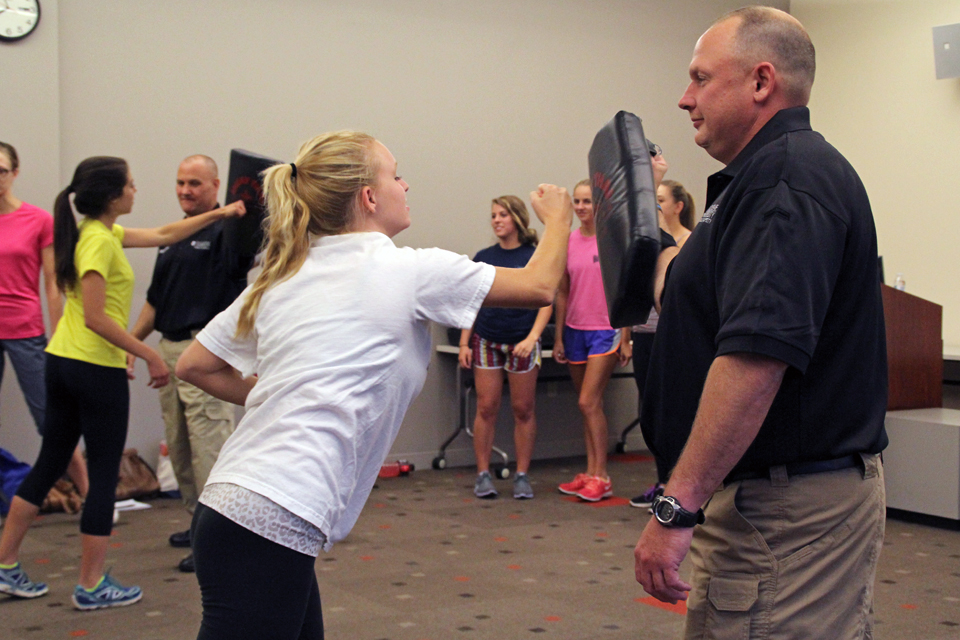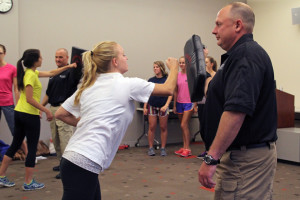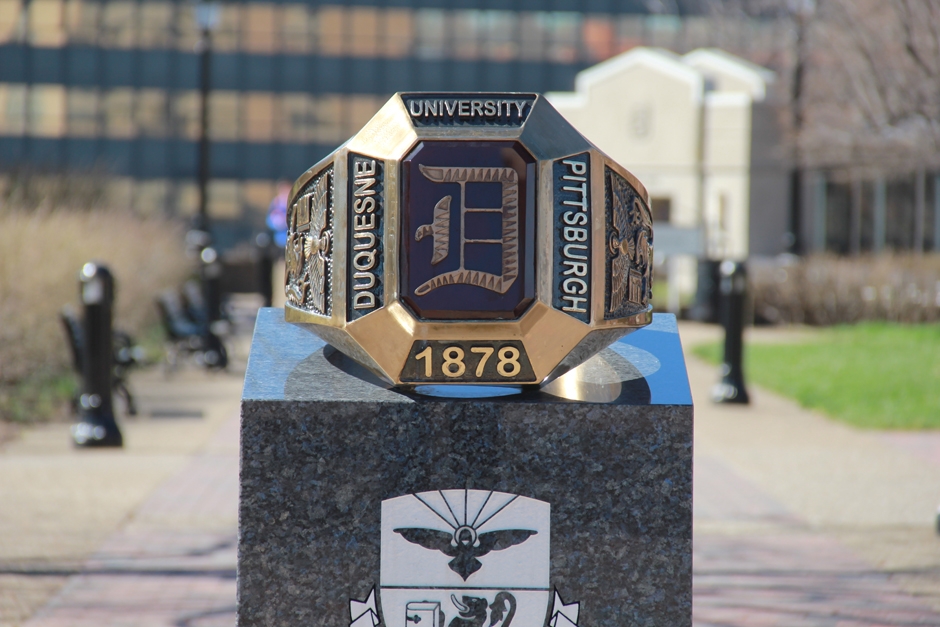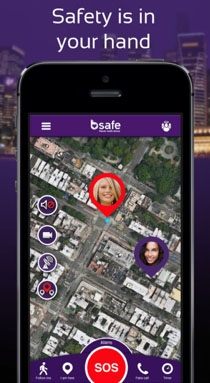

Jill Power | The Duquesne Duke
It’s the beginning of a new fall semester, and you know what that means; new books, new friends, and weekend nights out. Indeed, it seems that many college students find going out a rite of passage. College is, after all, a time for experimentation and self-discovery, and most students have not had access to this level of activity and freedom.
But what happens when this expression of youth leads to harm, both physical and emotional? How can we, as college students, prevent a night out from becoming a memory of hurt and violation?
Enter SAFE, or Self-Defense Awareness and Familiarization Exchange, a program designed by the National Self-Defense Institute to provide women and girls the opportunity to learn and practice basic self defense. On August 28, I attended Duquesne’s presentation of the event in the Power Center.
I, along with roughly 25 other women, sat in front of two male Duquesne Police Officers, awaiting the beginning of the program. Officer Dan Stivenson, with his kindly but gruff demeanor, stood with Officer Dan Churma, a slightly softer, grandfatherly sort of man, at the front of the florescent-lit classroom.
The group varied from freshman to seniors. We received small index cards educating us about not only alcohol poisoning, but how many drinks are too many for a specific body weight. While informative, they certainly set the tone for the program; alcohol is responsible for women’s assault.
This kind of backward reasoning was furthered in the video portion of the program. The obviously dated, 18-minute film covered the basics of the program: the importance of preparedness, the peace-of-mind women can receive by knowing how to respond in stressful situations and how women can physically fight back. While these are all important aspects of self-defense, the tone in which they’re stated are, frankly, accusatory and unfair towards women.
In fact, one step of the program’s 12 steps to prevent assault is “5. Gimme Five Ways Not To Look Like A Victim.” Is there a universally accepted image of what a victim looks like? Did I miss out on the “How to Spot a Victim” portion of the program? The answer to both of those questions is no, and terribly harmful to not only women, but men, too. By telling women and girls how not to “look like a victim,” they learn that their natural state is victim, thus only men can assault them. Where does that leave men and boys who are victims of physical and sexual assault? Are women not capable of assault too?
Our two instructors could not have been more helpful. At first, the thought of two aged policemen teaching a group of college girls self-defense made me giggle. Picture your grumpy, gristly uncle teaching you how to throw a and you’ll have an idea of what I expected. I was, as always, wrong. Both officers made me feel comfortable, and any questions were fielded with respect. I no longer felt that I needed to apologize for being born a girl, or that I should be held responsible for an assault I may fall victim to while intoxicated. I felt that I was simply being given all of the information necessary to protect myself.
The physical aspect of the program informed us of what points on the body are most vulnerable during an attack, what a correct defense position is, how to throw a punch, and what to do once you escape an attacker. our instructors then donned protective padding in order for us to practice our new moves. In case you were wondering, punching and kicking a police officer is great stress-relief after a week of classes. Just make sure they’re okay with it first.
Many of the girls who attended the program were there simply because they wanted to learn self-defense. “I think every woman should be able to protect themselves,” said Miranda Lowery, a Freshman Pharmacy student. For students like Miranda, self-defense is a means of empowerment for women, not just something they learn for protection.
Despite the obvious bias towards sexual violence and the program’s victimization of women, my experience with the SAFE program was positive. I am proud of the University’s attention to the troubling rise of violence against women on college campuses. A dated program is better than none at all. You have one last chance to attend the program: this Wednesday, September 10, at 7 p.m.




